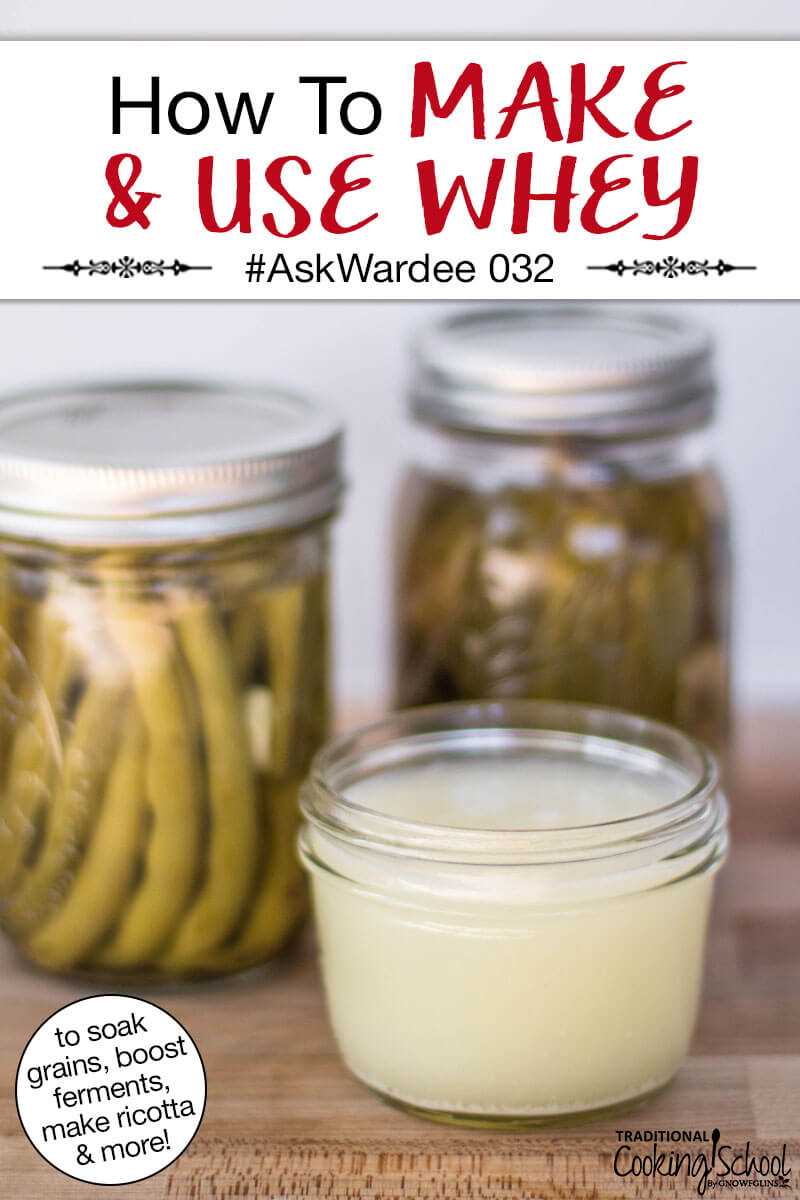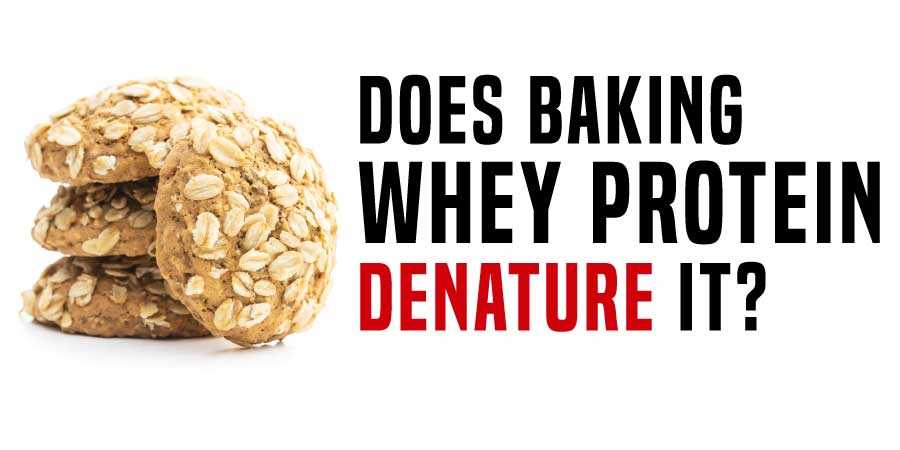





Whey protein is a popular dietary supplement among fitness enthusiasts and athletes due to its high protein content and numerous health benefits. It is a byproduct of cheese production and is often consumed in the form of shakes and smoothies. But can whey protein be used in cooking?
The answer is yes! Whey protein can be a versatile ingredient in the kitchen, adding a protein boost to a variety of dishes without altering the taste too much. It is commonly used in baked goods like muffins, pancakes, and cookies, where it can replace some of the flour or other dry ingredients. Its powdery texture helps the baked goods rise and provides a fluffy texture.
Not only can whey protein be used in baking, but it can also be added to savory dishes like soups, sauces, and even stir-fries. It can be used as a thickening agent and adds an extra protein punch to the dish. However, it’s important to note that whey protein may become grainy or clumpy if exposed to high temperatures or prolonged cooking, so it’s best to add it towards the end of cooking.
In conclusion, whey protein can be a valuable ingredient in your kitchen, allowing you to add a protein boost to your favorite dishes without compromising their taste. Whether you’re baking or cooking savory dishes, whey protein can be a versatile addition to your culinary repertoire.
Benefits of Cooking with Whey Protein
Whey protein is a popular supplement among athletes and fitness enthusiasts because of its numerous health benefits. It is derived from milk during the cheese-making process and is often used in protein powders and shakes. However, whey protein can also be used in cooking to enhance the nutritional value of various dishes. Here are some benefits of cooking with whey protein:
1. High Protein Content
Whey protein is known for its high protein content. It contains all nine essential amino acids, making it a complete protein source. Adding whey protein to your recipes can help increase your protein intake, which is essential for muscle growth, repair, and overall health.
2. Muscle Recovery
Consuming whey protein after a workout can help with muscle recovery and repair. When cooked with other ingredients, whey protein can be incorporated into post-workout meals or snacks, providing your body with the necessary amino acids to repair and rebuild muscle tissue.
Pro tip: Adding whey protein powder to your pancake or waffle batter can make for a delicious and protein-packed breakfast.
3. Weight Management
Whey protein is known to increase satiety and promote feelings of fullness, which can aid in weight management. By adding whey protein to your recipes, you can create meals that are more satisfying and help curb cravings, making it easier to stick to your calorie goals.
Pro tip: Try incorporating whey protein into your homemade energy balls or protein bars for a nutritious and filling snack on-the-go.
4. Versatility

Whey protein is incredibly versatile and can be used in various recipes. It can be added to both sweet and savory dishes, such as smoothies, baked goods, soups, and more. Its neutral flavor allows it to easily blend in, without overpowering the taste of the other ingredients.
Overall, cooking with whey protein offers a range of benefits, from increased protein intake to improved muscle recovery and weight management. Experiment with incorporating whey protein into your favorite recipes to enjoy these benefits and enhance the nutritional value of your meals.
Enhanced Nutritional Value
Whey protein is not only a rich source of protein, but it also offers many other nutritional benefits. It contains all nine essential amino acids that the body needs for proper functioning and repair. These amino acids help in muscle building and recovery after exercise, making it an ideal supplement for athletes and fitness enthusiasts.
In addition to amino acids, whey protein is also rich in vitamins and minerals. It is a good source of essential vitamins such as vitamin B12, which is essential for red blood cell production, and vitamin B6, which helps the body convert food into energy. It also contains minerals like calcium, which is important for bone health, and magnesium, which is involved in many biological reactions in the body.
Furthermore, whey protein is low in fat and carbohydrates, making it a suitable choice for those looking to lose weight or maintain a healthy diet. It provides a concentrated source of protein without adding unnecessary calories or sugar to a meal or snack. This can help to keep you feeling full and satisfied, reducing the temptation to consume high-calorie, unhealthy foods.
- Rich source of essential amino acids for muscle building and recovery
- Contains essential vitamins like B12 and B6 for energy production
- Provides minerals like calcium and magnesium for bone health
- Low in fat and carbohydrates, making it suitable for weight management
Increased Protein Content

One of the main benefits of cooking with whey protein is the increased protein content it adds to your meals. Whey protein is known for its high biological value, meaning it provides the essential amino acids your body needs for optimal muscle growth and repair.
By incorporating whey protein into your recipes, you can easily increase the protein content of your meals without adding unnecessary fats and carbohydrates. This is especially beneficial for those who are trying to meet their daily protein requirements for muscle building or weight loss goals.
Whey protein can be added to a variety of dishes, such as smoothies, pancakes, muffins, and even savory dishes like soups and casseroles. It can also be used as a substitute for flour in baking, providing a protein boost to your favorite baked goods.
Health Benefits
In addition to the increased protein content, whey protein also offers several health benefits. It has been shown to promote satiety, helping to keep you feeling full for longer and reducing overall calorie intake. This can be particularly helpful for those who are trying to lose weight or maintain a healthy weight.
Furthermore, whey protein has been studied for its potential role in managing blood sugar levels. It may help improve insulin sensitivity and regulate blood sugar levels in individuals with type 2 diabetes.
Whey protein is also a rich source of essential amino acids, including leucine, which plays a key role in muscle protein synthesis. This can support muscle recovery and growth, making it a popular choice among athletes and those engaging in regular exercise.
Considerations
While whey protein can be a valuable addition to a healthy diet, it’s important to note that it should not replace whole food sources of protein entirely. Whole foods offer a wide range of other essential nutrients that whey protein alone cannot provide.
Furthermore, individuals with lactose intolerance or dairy allergies should choose a whey protein isolate, which has had most of the lactose removed. It’s always important to read product labels and consult with a healthcare professional if you have any dietary restrictions or concerns.
In conclusion, cooking with whey protein can help increase the protein content of your meals and provide numerous health benefits. By incorporating it into your recipes, you can enjoy delicious and nutritious meals while supporting your fitness and health goals.
Improved Muscle Recovery
Whey protein is known for its ability to help with muscle recovery after intense exercise. When you engage in strenuous physical activity, your muscles undergo microtears, which is a normal part of the muscle-building process. Consuming whey protein can provide the necessary amino acids to repair and rebuild these muscle fibers.
Research has shown that whey protein can enhance muscle recovery and reduce muscle damage after workouts. A study published in the Journal of Sports Science and Medicine found that consuming whey protein after resistance training significantly increased muscle protein synthesis, leading to improved muscle recovery and growth.
In addition to promoting muscle repair, whey protein can also help reduce muscle soreness and fatigue. A study published in the International Journal of Sport Nutrition and Exercise Metabolism found that subjects who consumed whey protein had lower levels of creatine kinase, an enzyme associated with muscle damage and inflammation, compared to those who did not consume whey protein.
Overall, incorporating whey protein into your diet can aid in muscle recovery by providing the necessary nutrients to repair and rebuild muscle fibers, reducing muscle damage and inflammation, and alleviating muscle soreness and fatigue.
Weight Management
Whey protein is a popular supplement for people who are looking to manage their weight. Due to its high protein content and low calorie count, whey protein can be a valuable addition to a weight management plan.
Benefits of Whey Protein for Weight Management
There are several reasons why whey protein is beneficial for weight management:
- Appetite Control: Consuming whey protein can help control appetite and reduce cravings. Protein is known to be more satiating than carbohydrates or fats, so adding whey protein to meals or snacks can help you feel fuller for longer.
- Muscle Building: Whey protein is rich in essential amino acids, which are the building blocks of muscle tissue. By promoting muscle synthesis, whey protein can help preserve and build lean muscle mass, which is important for maintaining a healthy metabolism.
- Metabolism Boost: Protein has a higher thermic effect compared to carbohydrates and fats, meaning that more calories are burned during its digestion and absorption. This can help increase your overall calorie expenditure and support weight loss.
How to Incorporate Whey Protein into Your Weight Management Plan
There are various ways to incorporate whey protein into your weight management plan:
- Meal Replacement: Replace one of your meals with a whey protein shake or smoothie. This can help reduce your overall calorie intake while providing essential nutrients.
- Snack: Use whey protein powder to make protein-rich snacks like energy balls, protein bars, or pudding. These snacks can help satisfy hunger between meals and prevent overeating.
- Post-Workout Recovery: Consuming whey protein after a workout can support muscle recovery and growth. This can help prevent muscle breakdown and promote weight loss.
Remember to consult with a healthcare professional or registered dietitian before making any significant changes to your weight management plan or adding new supplements.
Questions and answers
Can I use whey protein in cooking?
Yes, whey protein can be used in cooking. It can be added to various recipes to increase the protein content of the dish.
What dishes can I cook with whey protein?
You can cook a wide variety of dishes with whey protein. It can be added to smoothies, pancakes, muffins, cookies, protein bars, and even savoury dishes like soups or sauces.
How should I use whey protein in cooking?
When using whey protein in cooking, you can simply add it to the recipe as instructed. However, it’s important to note that whey protein may affect the texture and taste of the dish, so it’s best to start with small amounts and adjust to your preference.
What are the benefits of cooking with whey protein?
Cooking with whey protein offers several benefits. It allows you to increase the protein content of your meals, which can help with muscle recovery and weight management. Additionally, whey protein is a complete protein source, meaning it contains all essential amino acids required by the body.








